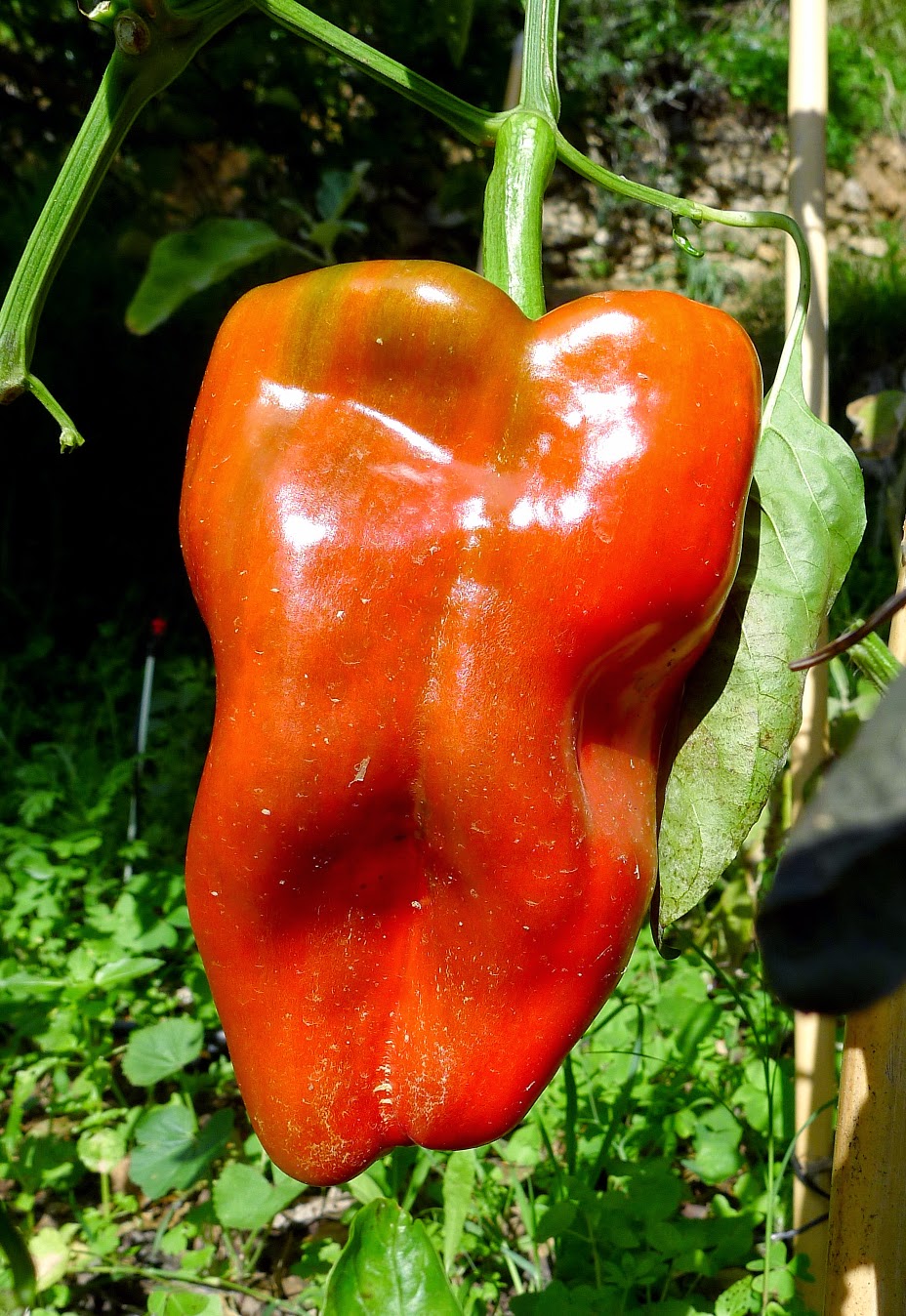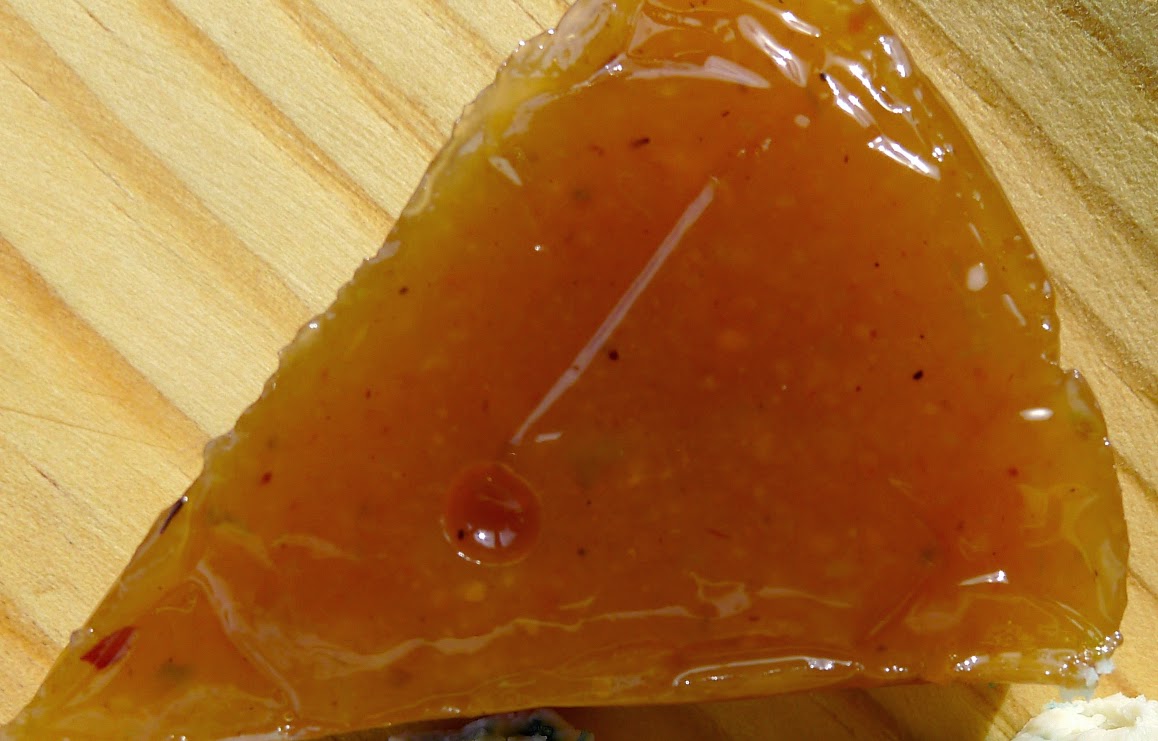 |
| Chicken chilindrón, with a heap of sweet red peppers. |
 |
| Very large red peppers. |
In Spain, the regions of the Ebro river valley—La Rioja, Navarra and Aragón (inland north-central Spain)—are famous for sweet peppers. Here the best-known dish made with peppers is chilindrón, peppers stewed with chicken or lamb. I made chicken in chilindrón to celebrate my harvest-season peppers.
Pollo al Chilindrón
Chicken with Sweet Red Peppers
Chicken with Sweet Red Peppers
 |
| Chicken stewed with red and green peppers, tomatoes, onion and wine. |
Use a whole, cut-up chicken or all legs and thighs for this recipe. You will need 3 or 4 roasted bell peppers. Roast your own or substitute store-bought flame-roasted peppers. Patatas fritas—potatoes fried in olive oil—are the usual accompaniment. But rice or wide noodles would be great to soak up the sauce.
Serves 4-6.
3-4 red bell peppers
2 ½ pounds chicken pieces
Salt and pepper
3 tablespoons olive oil
1 green pepper, cut in 1-inch pieces
2 onions, finely chopped
3 cloves garlic, chopped
3 ounces serrano ham, cut in thin strips (optional)
½ teaspoon sweet pimentón (paprika)
Red chile flakes (optional)
4 tomatoes, grated (about 2 cups tomato pulp)
1/3 cup white wine
 |
| Roast peppers over gas flame. |
Roast the peppers on a grill over hot coals, over a gas flame or under the broiler, turning them until charred on all sides. Remove the peppers to a bowl, cover and allow them to cool. Discard stems and seeds and rub off the charred skin. Cut or tear the peeled peppers into strips.
 |
| Rub off the charred skin. |
Sprinkle the chicken pieces with salt and pepper and allow to come to room temperature. Heat the oil in a cazuela or deep skillet and brown the chicken pieces on all sides. Remove them as they are browned.
Add the cut-up green pepper, onions, garlic and ham, if using, to the pan and sauté until onion begins to brown, 6 to 8 minutes. Stir in the pimentón and chile flakes, if using. Add the grated tomato pulp and cook on high for 3 minutes. Stir in the wine, ½ teaspoon salt and freshly ground pepper. Return the chicken pieces to the pan. Cover and let the chicken simmer 30 minutes. Turn the chicken pieces, add the reserved red pepper strips and uncover the pan. Cook until chicken is tender, another 20 minutes.
 | ||
| Chicken chilindrón, a dish famous in Aragón. |
 |
| The sauce of sweet peppers is good with potatoes, rice or noodles. |
 |
| Sweet bell peppers, roasted, peeled and cut in strips. Add olive oil, a splash of vinegar and heap them on toasts. Top with strips of anchovies for a delicious tapa. |








































